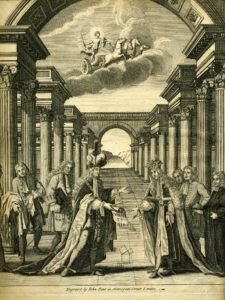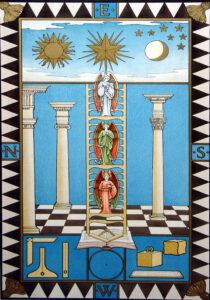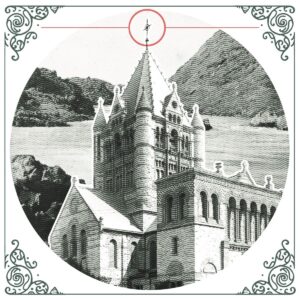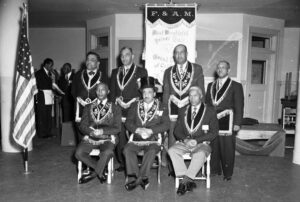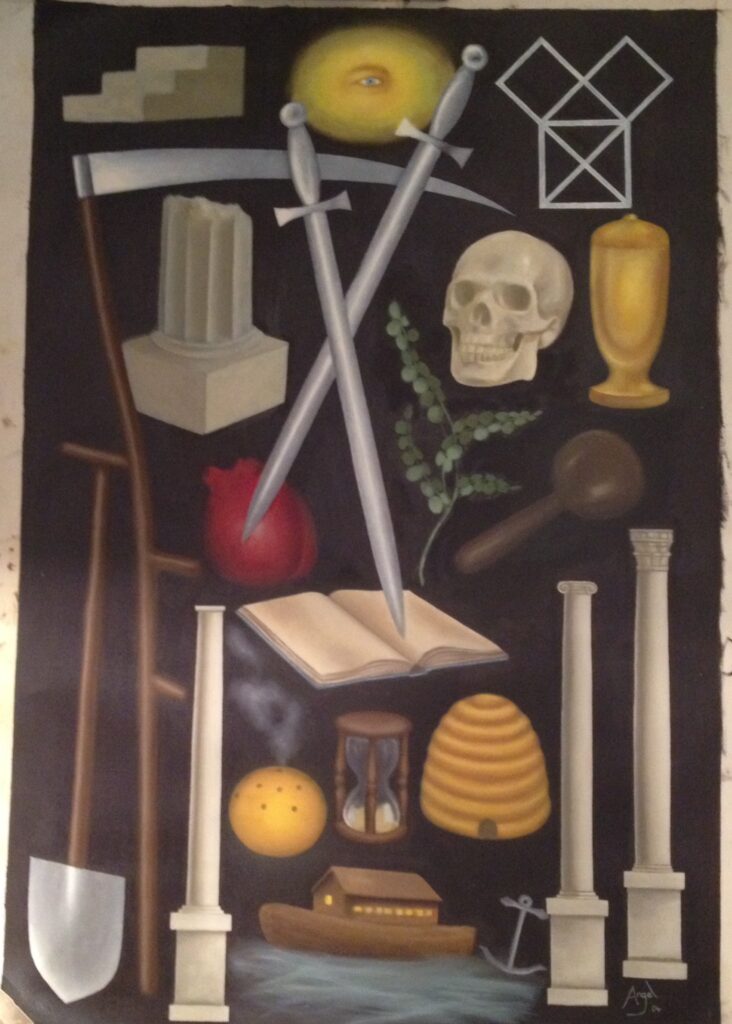
MASONIC RANKS
A guide to the Masonic ranks and the Freemasons’ degree system.
The craft lodges of Masonry, where Masons begin their journey through Freemasonry, have three ranks, or degrees. Once they’ve completed those, members are able to pursue further degrees through “appendant” Masonic bodies that offer even more ranks beyond that. What does it all add up to? Is there a system to putting Masonic ranks in order—and if so, what’s at the top?
The Three Craft Degrees of Freemasonry
Throughout most of the world, Freemasonry is divided into three stages of membership ranks, or degrees:
- Entered Apprentice
- Fellow Craft
- Master Mason
These levels correspond with members’ self-development and increased knowledge of Freemasonry. As a member completes each phase of learning, the lodge holds a ceremony to confer the degree.
Degree names are taken from craft guilds: In the Middle Ages, to become a stonemason, a man would first be apprenticed. As an apprentice, he learned the tools and skills of the trade. When he had proved his skills, he became a “fellow of the craft,” and when he gained exceptional ability, he was known as a “master of the craft.” Today, Freemasonry’s moral code is told through the symbolic lessons of these degrees.
The highest rank in Freemasonry, then and now, is the third degree: Master Mason.
Honorary Degrees: The 33rd Degree and Beyond
Once you’re a Master Mason, you can choose to pursue supplemental degrees, also known as honorary degrees, through appendant Masonic organizations like the Scottish Rite, the York Rite, or the Shrine (among many others).
For example, you may have heard about “33rd degree Masons,” a designation that’s earned celebrity status partly thanks to its (not entirely accurate) role in Dan Brown’s 2009 bestseller The Lost Symbol. This refers to the honorary 33rd degree awarded by the Scottish Rite, a Masonic organization that’s an extension of Freemasonry. Other Masonic organizations have their own supplemental degrees, which provide additional ways for members to study the lessons of Freemasonry.
These degrees are certainly high honors, but within the Masonic system, they aren’t considered any higher in rank or prestige than the Master Mason degree.
In other words: No matter how many additional degrees a member might pursue, the highest rank in Freemasonry is always the third degree of Master Mason.
A Level Look at Masonic Ranks
It’s tempting to assume it’s somehow “better” or more prestigious to be a Master Mason than a Fellow Craft, better to earn 32 appendant degrees than 14, and better to be the grand master of a huge jurisdiction than a new applicant at the local lodge.
But in Freemasonry, there are no such hierarchies. That’s partly because one of Masonry’s core values is equality. Members vow to treat each other with equal respect and friendship across all stations in the lodge and all stations in life. Members who have earned additional degrees or achieved leadership ranks are no “more a Mason” than any other Master Mason.



